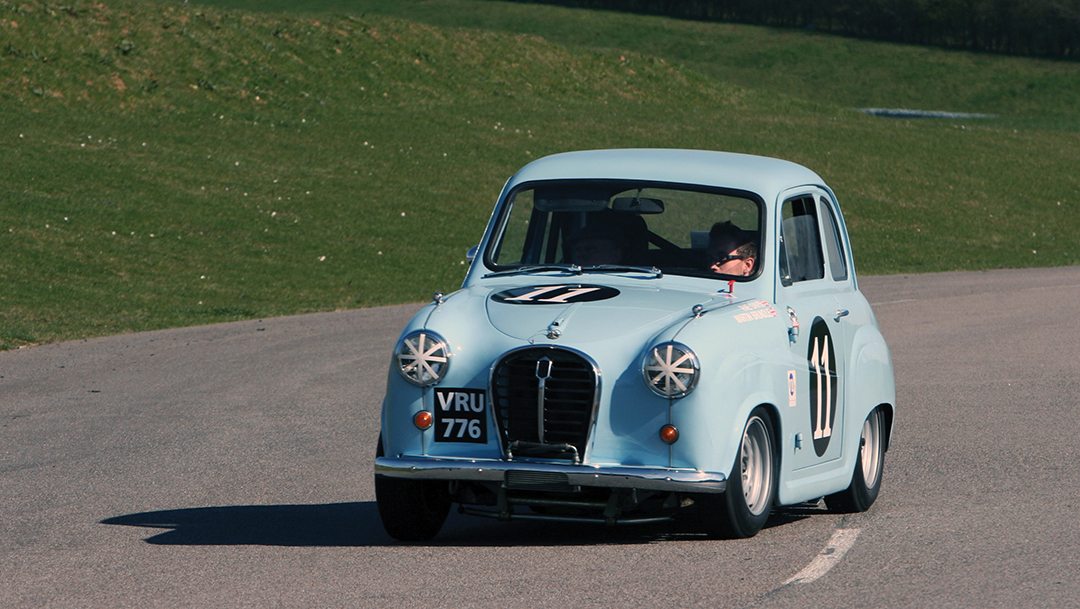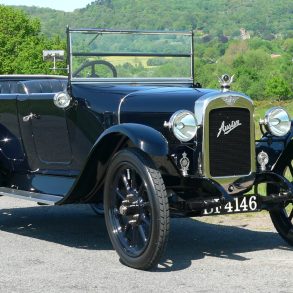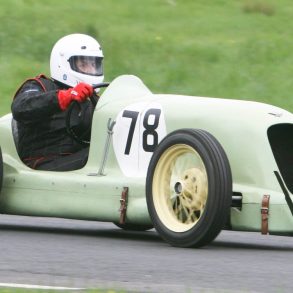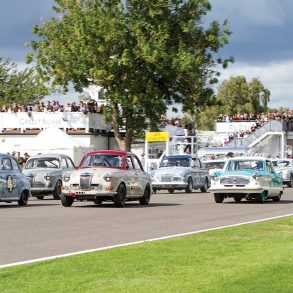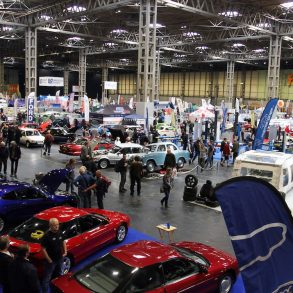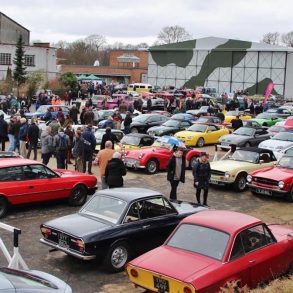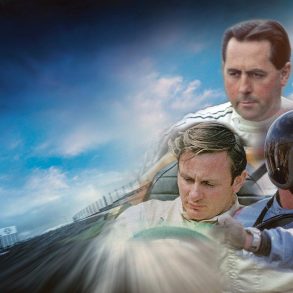Having driven and built many racing cars in my time, the first car that comes to mind is the Ford Sierra Cosworth hatchback I drove in three Willhire 24-hour races. It started off as a production saloon car and then went to Group N regulations. It was an immensely fast car in standard form, but you could raise the boost up on it. The brakes weren’t bad, but on the whole it was a point-and-squirt type of car that wasn’t that fast through the corners. They were a great spectacle, especially during the night stints at the 24-hour races, the brake discs glowed and masses of flame belched out of the side exhausts—a real crowd pleaser from that point of view.
I have to say, without any doubt however, that my greatest racing car was one of those nutty, little Austin A35s, again a great crowd pleaser—especially at the Goodwood Revival. Typically, people would look at the car in the paddock and make comments about it prior to qualifying. After qualifying, they’d come back and take a second glance, as they couldn’t believe the agility and speed the car was capable of on track—it was a kind of disbelief that the car in front of them could put in such a performance. You could probably say the same about the Austin A40, but the car just doesn’t have the looks, or the fun element of the A35. When talking about the A35, I’m referring to the Speedwell class car. The Speedwell cars are quite powerful, well balanced and only susceptible to turning over if, like any other racing car—including Formula One cars—they are hit in the wrong place while racing.
I’ve had some great drivers in my A35, including Martin Brundle. When you consider he’s driven top F1 cars, he won Le Mans in the Group C Silk Cut Jaguar and has driven numerous notable racing cars, the little A35 still put a big grin on his face. He was a bit skeptical at first—understandably so, as he’s a quite cautious bloke—but once he’d got stuck into it on the track, he thought it was great. In the race, he got bumped, which cost him the victory, but his Goodwood lap record stood for a number of years in the car.
It’s great when professional drivers race historic cars, its an opportunity for them to “let their hair down,” shall we say, without the pressure of the team, sponsors or any other outside pressure on them to win. I’ve just prepared a car for BTCC and GT driver, Tom Onslow-Cole; he can’t wait to get behind the wheel and have a go. He’d probably come up against some of his BTCC competitors, like Andrew Jordan or Matt Neal, but in a very different environment of racing. I’d like to think our car will be very competitive against such a grid. Naturally, being BTCC guys, I’m sure door handles will be rubbed and other shenanigans typical of touring car racing—at it at full steam, you could say. Realistically, although these types of historic touring cars are fast, they’re nothing, speed-wise, compared with the modern day, hi-tech cars they’re used to driving week in and week out. The drivers are all well in their comfort zone, not frightened at all and, as I’ve already said, no outside pressures, commercial or otherwise. I’ve been very fortunate to run a good number of top professional drivers in my team, other than Martin Brundle, including Rob Huff, Nicolas Minassian and Emanuele Pirro—all superb drivers, and long may it continue—particularly in the A35!
As told to Mike Jiggle


